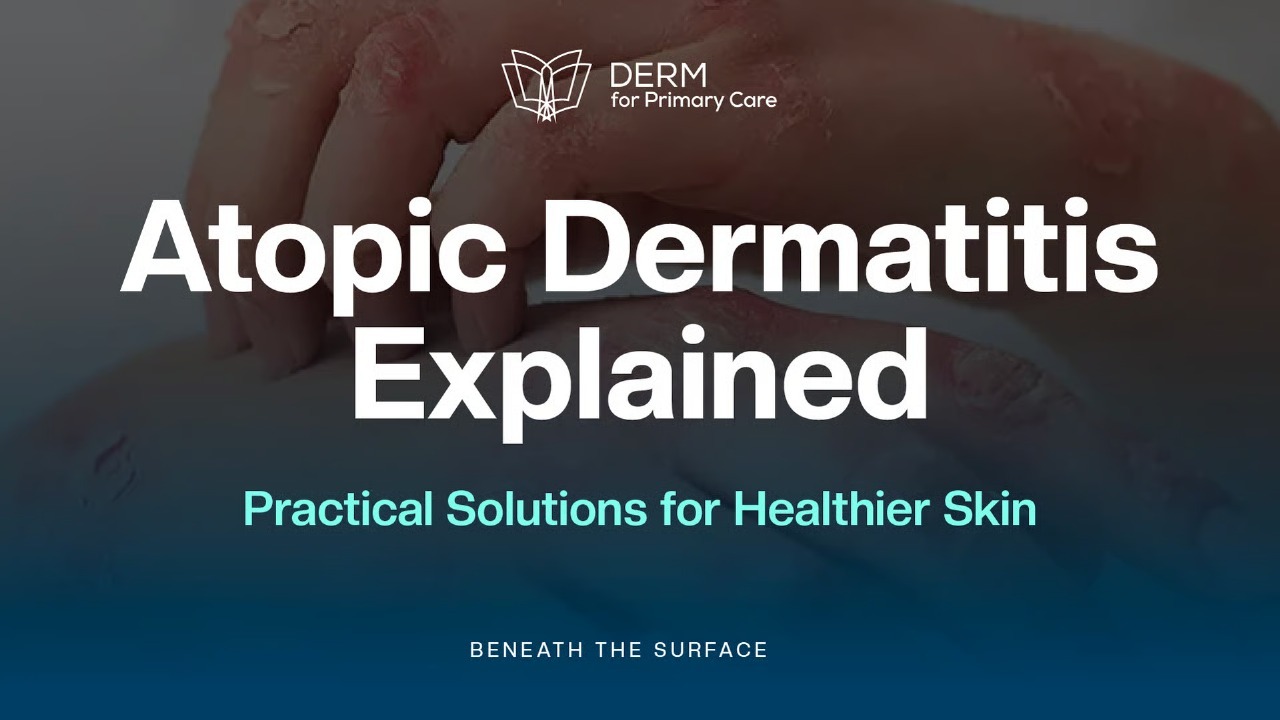- Beneath the Surface
- Posts
- Eczema & the Skin Barrier: What the Microbiome Reveals
Eczema & the Skin Barrier: What the Microbiome Reveals
Uncovering the triggers behind the flare-ups, how to calm them effectively, and why early recognition spares patients from chronic discomfort.

This week’s issue is brought to you by Codex Labs
Welcome back, DERM Community!
October is Eczema Awareness Month, and this week we’re diving into the science of the skin barrier and the skin microbiome.
Eczema isn’t just about dryness or itch, it’s the outcome of a disrupted barrier and a microbiome imbalance that perpetuate inflammation and flares.
For patients, this explains why a simple moisturizer may not be enough, and why ingredient choice and formulation matter.
This week, we’ll explore:
How barrier dysfunction fuels eczema symptoms
The microbiome’s role in flare frequency and severity
What research says about topical ingredients that help restore balance
How to talk to patients about evidence-based, microbiome-friendly care
Featured on This Week’s Chapter:
The Barrier–Microbiome Connection in Eczema
Atopic dermatitis is a chronic inflammatory condition marked by barrier breakdown, immune overactivation, and microbial shifts.
🔹 Barrier Dysfunction: Defects in filaggrin and ceramide production lead to water loss, dryness, and cracks, making it easier for allergens and microbes to enter.
🔹 Microbiome Imbalance: Patients often show reduced microbial diversity and overgrowth of Staphylococcus aureus, which drives inflammation and worsens itch.
🔹 Environmental & Internal Triggers: Stress, diet, seasonal changes, and even antibiotic use can alter microbial communities, compounding the cycle of barrier damage and immune dysregulation.
Topical Ingredients Under the Microscope
Research highlights ingredients that support both barrier repair and microbiome health:
Ceramides & lipids: replenish barrier structure
Prebiotics & postbiotics: promote a balanced microbiome
Plant-derived polysaccharides: strengthen hydration and barrier resilience
Antimicrobial peptides (AMPs): being explored as alternatives to broad-spectrum antibiotics
But caution is key: not every “integrative” or “microbiome-friendly” label is backed by science. Clinicians can help patients navigate options by reinforcing that safety and evidence must guide choices.
Beyond the Skin
Eczema isn’t just a surface issue. Barrier disruption and microbiome imbalances can trigger systemic inflammation, elevate stress hormone activity, and disrupt sleep. These interconnected factors create a self-perpetuating cycle that intensifies symptoms and impacts quality of life.

A compromised skin barrier allows allergens, irritants, and microbes to penetrate, provoking inflammation. Meanwhile, gut and skin microbiome imbalances can amplify this response, making flares more severe. Stress activates the hypothalamic–pituitary–adrenal axis, raising cortisol and other inflammatory mediators, which worsen itch and barrier disruption. Poor sleep further dysregulates immune function, compounding the problem.
Comprehensive eczema care must therefore take a holistic approach:
Repair the skin barrier
Restore microbial balance
Reduce triggers such as stress and poor sleep
Integrate evidence-based topical and systemic therapies
What About Additional Care Options?
Many patients are interested in alternatives to steroids or biologics. Clinicians can support them by:
Highlighting science-backed tools that protect and restore the barrier
Educating patients on ingredients to avoid, such as harsh surfactants, fragrances, and allergens
Positioning microbiome-friendly products as complements (not replacements) to medical care
These conversations empower patients who may feel frustrated or fearful of long-term medications, helping them adopt safe, effective routines that address the root of their symptoms.
By recognizing the interconnected roles of skin, gut, stress, and sleep, clinicians can guide patients toward strategies that truly support the whole system, not just the visible lesions.
We’ve Put Together a Free Guide Just for You!
Want to Go Deeper?
Take one of our modules
Whether you’re a clinician, student, or educator, our eczema module breaks down atopic dermatitis, contact dermatitis, dyshidrotic eczema, nummular eczema, and more.
A TED Talk You Shouldn’t Miss
Today we recommend:
Healthy skin starts from within, a TED Talk by Barbara Paldus.
What if the key to healing your skin wasn’t a cream, but a deeper understanding of your gut, your brain, and your invisible microbiome? Barbara explores the idea that compromised skin must be treated through the gut barrier and microbiome, and that your mental health may significantly affect your skin condition.
Inspiration of the Week
“The miracle is this: The more we share the more we have.”
-Leonard Nimoy
👋🏻 See you next Thursday, DERM community!
Eczema isn’t just “skin deep.” It’s a story of barrier breakdown, microbial imbalance, and systemic stress, all of which demand an integrative approach.
Our job? To guide patients with science, empathy, and evidence, making sure every plan strengthens not just the skin, but the person living in it.
If today’s issue clarified the link between barrier and microbiome, share it with your peers, students, or patients.
Until next week: stay curious, stay kind, and keep learning.
Thank you for being here with us!
— The Derm for Primary Care Team



Reply